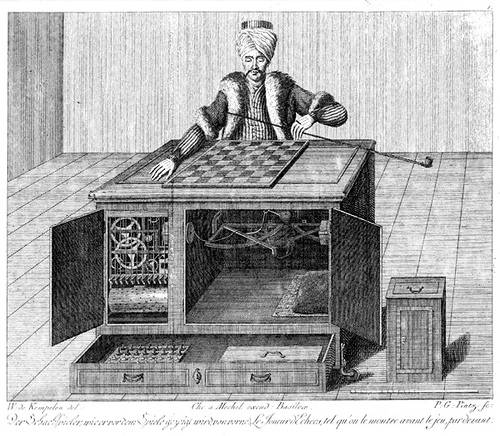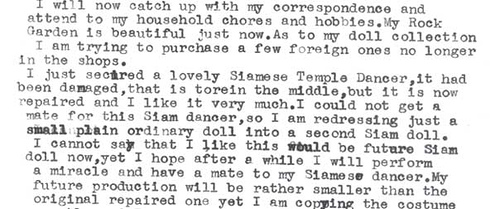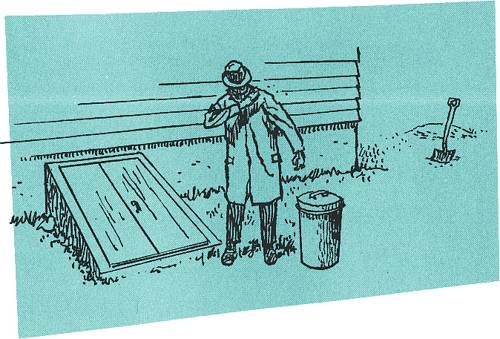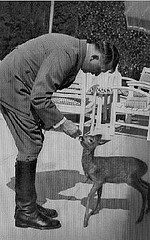In 1803, Australian Joseph Samuel was sentenced to hang for murder. The first attempt failed when the rope broke. A replacement rope stretched, letting Samuel’s feet touched the ground. And the third rope broke.
So they let him go.
In 1803, Australian Joseph Samuel was sentenced to hang for murder. The first attempt failed when the rope broke. A replacement rope stretched, letting Samuel’s feet touched the ground. And the third rope broke.
So they let him go.
— Satirical lyceum speaker Petroleum Vesuvius Nasby, “The Struggles of a Conservative with the Woman Question,” 1868
“Servants are a necessary evil. He who shall contrive to obviate their necessity, or remove their inconveniences, will render to human comfort a greater benefit than has yet been conferred by all the useful-knowledge societies of the age. They are domestic spies, who continually embarrass the intercourse of the members of a family, or possess themselves of private information that renders their presence hateful, and their absence dangerous. It is a rare thing to see persons who are not controlled by their servants. Theirs, too, is not the only kitchen cabinet which begins by serving and ends by ruling.”
— From The Laws of Etiquette, by “A Gentleman,” 1836

People were willing to believe in a chess-playing automaton as early as 1769. That’s when Wolfgang von Kempelen unveiled “The Turk,” a cloaked and turbaned robot that played over a maplewood cabinet full of clockwork. The contraption toured the courts of Europe, where it beat Benjamin Franklin and Charles Babbage, among many others.
The machine’s secret emerged only in 1854, after the automaton was destroyed in the great Philadelphia fire. The cabinet had contained a human player who followed the game by watching magnets on the board’s underside. He made his moves on a secondary board that transmitted them to the Turk.
Still, it played some good games. Here it beats the crap out of Napoleon Bonaparte, who has White:
1. e4 e5 2. Qf3 Nc6 3. Bc4 Nf6 4. Ne2 Bc5 5. a3 d6 6. O-O Bg4 7. Qd3 Nh5 8. h3 Bxe2 9. Qxe2 Nf4 10. Qe1 Nd4 11. Bb3 Nxh3+ 12. Kh2 Qh4 13. g3 Nf3+ 14. Kg2 Nxe1+ 15. Rxe1 Qg4 16. d3 Bxf2 17. Rh1 Qxg3+ 18. Kf1 Bd4 19. Ke2 Qg2+ 20. Kd1 Qxh1+ 21. Kd2 Qg2+ 22. Ke1 Ng1 23. Nc3 Bxc3+ 24. bxc3 Qe2# 0-1
Humans have no monopoly on valor. A pigeon won the French Croix de Guerre for heroic service delivering messages in Verdun during World War I.
Cher Ami, a Black Check cock, delivered 12 important messages for the U.S. Army Signal Corps.
On his final mission, during the battle of the Argonne in October 1918, he was shot through the breast and still delivered his message. It was found in a capsule hanging from his shattered leg, and helped saved around 200 U.S. soldiers of the 77th Infantry Division’s “Lost Battalion.”
“SENDING VESSELS OVER NIAGARA FALLS. — There have been three such instances. The first was in 1827. Some men got an old ship — the Michigan — which had been used on Lake Erie, and had been pronounced unseaworthy. For mere wantonness they put aboard a bear, a fox, a buffalo, a dog and some geese and sent it over the cataract. The bear jumped from the vessel before it reached the rapids, swam toward the shore, and was rescued by some humane persons. The geese went over the falls, and came to the shore below alive, and, therefore, became objects of great interest, and were sold at high prices to visitors at the Falls. The dog, fox, and buffalo were not heard of or seen again.
“Another condemned vessel, the Detroit, that had belonged to Commodore Perry’s victorious fleet, was started over the cataract in the winter of 1841, but grounded about midway in the rapids, and lay there till knocked to pieces by the ice.
“A somewhat more picturesque instance was the sending over the Canada side of a ship on fire. This occurred in 1837. The vessel was the Caroline, which had been run in the interest of the insurgents in the Canadian rebellion. It was captured by Colonel McNabb, an officer of the Canada militia, and by his orders it was set on fire then cut loose from its moorings. All in flames, it went glaring and hissing down the rapids and over the precipice, and smothered its ruddy blaze in the boiling chasm below. This was witnessed by large crowds on both sides of the falls, and was described as a most magnificent sight. Of course there was no one on board the vessel.”
— From Barkham Burroughs’ Encyclopaedia of Astounding Facts and Useful Information, 1889

Looks pretty innocuous, right? This is part of a letter composed by New York doll shop owner Velvalee Dickinson in May 1942. The FBI decoded it as follows:
I just secured information on an aircraft carrier warship. It had been damaged, that is, torpedoed in the middle. But it is now repaired. … They could not get a mate for this, so a plain ordinary warship is being converted into a second aircraft carrier. …
Probably she was referring to the aircraft carrier U.S.S. Saratoga. Apparently Dickinson had been operating as a Japanese spy throughout the war — her letters to Buenos Aires, ostensibly about doll collecting, had actually contained detailed information about U.S. warships, coastal defenses, and repair operations.
She protested her innocence but got the maximum sentence, 10 years and a $10,000 fine. She died in 1980.
The condensed wisdom of Greece’s “seven sages,” as recorded on the temple wall at Delphi:

“If anyone has been outside and fallout particles have collected on his shoes or clothing, they should be brushed off before he enters the shelter area again.”
— From In Time of Emergency: A Citizen’s Handbook on Nuclear Attack, 1968

For a genocidal monster, Adolf Hitler was kind of a pansy:
Hitler didn’t smoke, either, and he promoted aggressive anti-smoking campaigns throughout Germany. Witnesses reported that, upon learning of his suicide, many of his officers, aides and secretaries responded by lighting cigarettes.